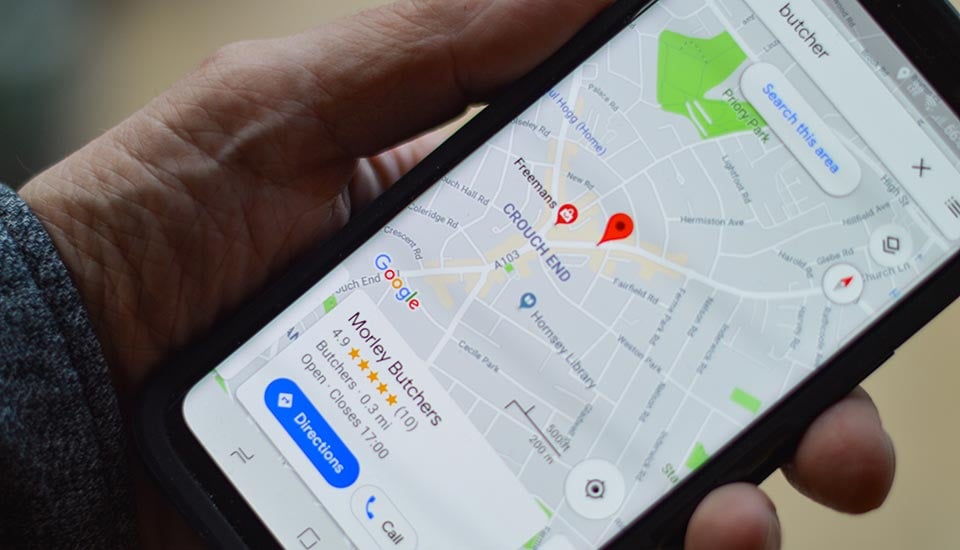Why Is Local SEO Important?
The short answer
46% of Google searches have local intent of Google searches have local intent - think "restaurants near me" searches.
The longer answer
In fact, four out of five consumers rely on local search as their means to find out more information about the businesses that they want to support. And Google knows where a searcher is located, prioritizing search results near them. With this in mind, if you haven't implemented the right local SEO tactics, then you could be missing out on 80 percent of your potential customers.
The good news is that our local SEO guide can give you tips on how to improve your SEO for your business.
What Is Local SEO?
As its name suggests, local SEO refers to the way businesses can promote their products and services to local prospects, customers and business partners. These local searches are critical to helping businesses connect with their intended audience. Through the right types of content, social profile pages, embedded links, citations and directory listings, businesses can maximize their local search efforts to achieve the optimal results.
How to Boost Local SEO
1. Optimize Google Business Profile (formerly Google My Business)
By optimizing your Google Business Profile, you help Google verify that your business a) is authentic, b) contains verifiable information, and c) is an entity to promote to customers. The best part about Google My Business is that it's a free tool.
As part of your optimization efforts, you should verify the exact address, contact information and location of your business. It also helps searchers see your hours of operations, photos of your products (and services, if applicable) and a brief description of your business. The "call now" button enables instantaneous calls from mobile browsers.
To optimize your Google Business Profile, complete the following steps:
- Enter and verify the information on your business page.
- Use Google Posts to amplify your brand and marketing messages.
- Encourage your customers to share their reviews online.
- Respond authentically to all reviews (good or bad).
- Ensure that your local and contact information is accurate.
- Link your Google Business Profile to your updated website.
2. Complete Critical Website Updates
Now that you've enhanced your Google Business Profile, turn your attention to your website. You might have already optimized your website in accordance with industry best practices, but now it's time improve your local SEO efforts with these five updates.
1. Improve Internal Links SEO best practices state that your site should have both internal and external links. However, too often businesses focus attention on acquiring external links that point to their site and forget about the importance of an internal linking structure. Internal links should support website navigation by directing users to key information and pages. The links can also assist with website hierarchy and site mapping. Finally, links can help establish page authority, which is especially important if you have a local business.
2. Implement Best Practices for URL, Title Tags, Headers, Meta Descriptions and Content Each time you write and publish a new piece of content, you must ensure that all components have been optimized. To achieve the best results, you may want to use location-specific keywords within the URL, title tags, meta description and content. Be sure to use a keyword in each of the headers. Additionally, you'll need to optimize any images with an alt tag.
Finally, make sure that you create location-targeted content. For example, your meta description should include a keyword and a location modifier such as "Houston" to maximize its local impact.
3. Add Location Pages Location pages are especially important for local businesses. These pages give your customers all of the information they need to decide which location is best suited to their needs. However, you shouldn't use duplicate content on your location pages. Instead, you should create a local description, add in verifiable directions and details about that location. You can also add Google Maps to your location pages to further increase their local SEO impact.
4. Create Content for Your Local Market As search engine algorithms advance, your content should be engaging, relevant and catered to your local audience. Establishing local authority can help your business improve search results, connect with local business partners, increase sales and establish your status as an industry leader. For example, you could write blog posts about the neighborhoods that your business serves, upcoming community events that your business will be participating in, and local news stories. Another great way to connect with your local market is to use common phrases found in the area, such as using "soda" for Northeast customers and "pop" for Midwest customers. A final tip for creating local content is to include well-placed geotags, such as the name of the city or town where your intended audience lives.
5. Ensure Your Website Design Is Mobile-Friendly Around 90 percent of smartphone users complete local searches on their devices every day. If your website isn't mobile-friendly, you'll lose the opportunity to convert your local audience into active customers. Whether it is looking up directions, hours of operation or a specific product or service, your website should be easy to navigate and include embedded links. Additionally, in 2018 Google announced that it would begin mobile-first indexing, which means that websites designed with mobile best practices will receive better ranking results.
3. Engage With Directories
Now that you've optimized your Google Business Profile and made sure that your website is mobile-friendly, connect it with the right tools and the help of directories.
Name, Address and Phone Consistency
One of the worst things that you can do for local searches is to create name, address and phone number (NAP) inconsistencies. The NAP information should be written as "searchable" or "crawl-able" HTML text, so it's properly indexed by search engines. You can easily display the NAP in either the footer or the header, which creates consistency across your website, including your blog.
Full Location Data Management
Next, implement ongoing location data management to ensure that your online presence is accurate. Keep in mind that an estimated 80 percent of customers lose trust when local business listings are inaccurate or contain outdated information. Through ongoing location data management you can ensure that your audience always accesses accurate and verifiable information.
Get Relevant and Authoritative Inbound Links
Inbound links are an exceptional tool to bolster your local SEO effort and help Google verify the legitimacy of your company. Sponsorships, guest blog posts, scholarships, your local chamber of commerce and active participation on directories (such as Yelp, Microsoft and Foursquare) can help you gain authoritative and relevant backlinks. Remember that by becoming an active participant in both industry and local community conversations you can also effectively expand your local reach.
Local SEO Guide: Conclusion
By optimizing your Google Business Profile, completing critical website updates and engaging with directories to connect your efforts together, you can enhance your digital efforts to reach your desired local audience.
To discover other helpful insights about how to SEO your site, reaching new levels of business success, and increasing sales through innovative out-of-the-box solutions, contact a member of our team today or explore our SEO services.


